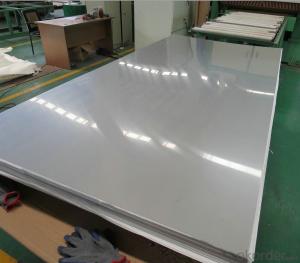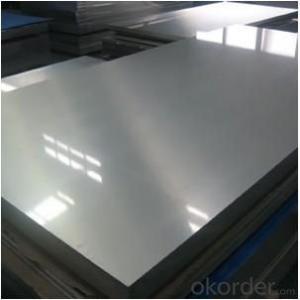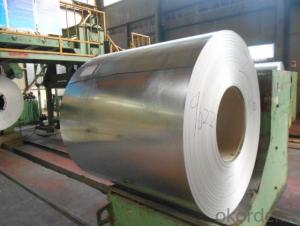SGS certification 304 stainless steel sheet in wuxi
- Loading Port:
- Shanghai
- Payment Terms:
- TT OR LC
- Min Order Qty:
- 5 m.t
- Supply Capability:
- 25000 m.t/month
OKorder Service Pledge
OKorder Financial Service
You Might Also Like
Item specifice
1.hot rolled and cold rolled stainless steel sheet detailed information:
Type | stainless steel sheet |
Thinckness | 0.3mm-60mm |
Widthness | 50mm~2000mm |
Length | 1000mm~1500mm or as request |
Brand name | TISCO,JISCO,BAOSTEEL,POSCO etc. |
Standard | JIS, AISI, ASTM, GB, DIN, EN |
Material | 201,202,304,304L,316,316L,317,310S,309S,410,420,430,904L etc |
Surface | 2B,BA,HL,BK,NO.1,NO.4,etc |
Certificate | We accept the third inspections |
Application | Bridge, Shipbuilding,roofing,Car, Construction,Chemical,etc |
Payment | T/T, 30% deposit, blance before loading, L/C |
Note | We can produce other standard as the customers’ require |
2. 304,304L stainless steel sheet Applications :
| Finish | Thickness | Characteristics | Applications |
| No. 1 | 3.0mm~50.0mm | Finished by hot-rolling, annealing and pickling, characterized by white pickled surface | Chemical industry equipment, Industrial tanks |
| No. 2B | 0.3mm~6.0mm | Finished by heat treatment, pickling after cold rolling, followed by skin pass line to be more brighter and smooth surface | General Application Medical Instruments,Tableware |
| No. BA (Bright Annealed) | 0.5mm~2.0mm | Bright heat treatment after cold rolling | Kitchen utensil, kitchen ware,architectural purpose |
| No. 4 | 0.4mm~3.0mm | Polishing with No. 150 to No.180 mesh abrasivesThe most popular finishes | Milk & Food processing acilities, Hospital Equipment, Bath-tub |
| HL(Hair Line) | 0.4mm~3.0mm | Finished by continuous linear polishing | Architectural purposes, escalators, kitchen ware vehicles |
Product display
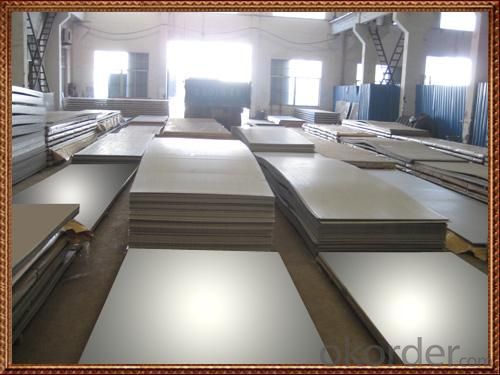
PVC Coated
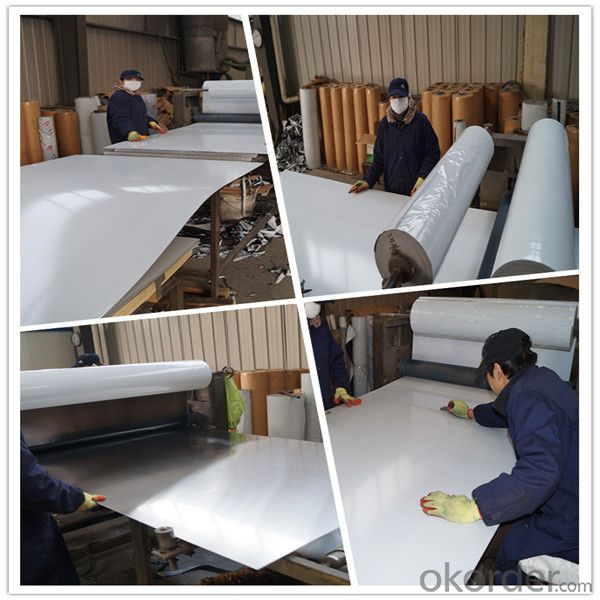
The other products
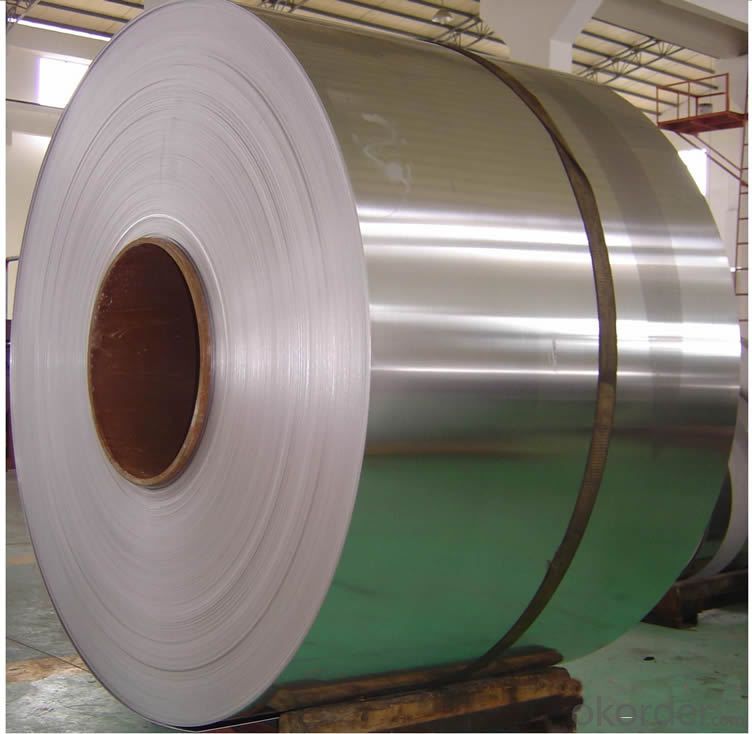

Why do you choose us?
1) Our products are high quality and best price.
2)We have experience in this line for many years.
3)We have professional team and the factory.
4)It's very important for a company to be honest in the process of trading and so do we.
If you are interested in our products,you can contact us.
- Q:Are stainless steel sheets resistant to galvanic corrosion?
- Yes, stainless steel sheets are highly resistant to galvanic corrosion.
- Q:What welding equipment do we need for welding stainless steel sheet and stainless steel square tube?
- 1 mm thick enough, basically argon arc welding machine can, 0.2 thick stainless steel plate welding is not good ah, how have three or four points it can be positive or negative, only a few joints only, mainly to see the technology myself you, not what, the polishing wheel is on the line let's do it, you can buy a good quality of argon arc welding machine, the high price of the arc is stable
- Q:What's the difference between stainless steel 8K and BA?. How to distinguish from the surface of materials?
- Stainless steel surface grade is divided into 2B, BA, 4K, 8K... BA can take a blurry picture. 8K is the highest grade of stainless steel, like a mirror, instead of a mirror.
- Q:Are stainless steel sheets suitable for food preparation surfaces?
- Yes, stainless steel sheets are highly suitable for food preparation surfaces. Stainless steel is non-porous, hygienic, and resistant to corrosion, making it a preferred material for food preparation. It is also easy to clean and does not react with acidic or alkaline foods, ensuring that it maintains the quality and taste of the prepared food.
- Q:Are stainless steel sheets suitable for laboratory equipment?
- Stainless steel sheets prove to be extremely well-suited for laboratory equipment due to their remarkable resistance to corrosion. This attribute renders them perfect for deployment in laboratory environments where chemicals and other corrosive substances are frequently employed. Moreover, stainless steel's cleaning and maintenance process is effortless, a critical factor for upholding a sterile laboratory setting. In addition, stainless steel exhibits durability and can withstand high temperatures, hence making it appropriate for various laboratory applications. Its robustness and ability to resist impact and wear ensure that laboratory equipment crafted from stainless steel can endure demanding usage and have a prolonged lifespan. In conclusion, stainless steel sheets offer a dependable and versatile material choice for laboratory equipment.
- Q:What are the different types of patterned finishes available for stainless steel sheets?
- There are several types of patterned finishes available for stainless steel sheets, including embossed, textured, perforated, brushed, and hammered finishes. Each of these finishes offers a unique aesthetic appeal and texture to the stainless steel, allowing for versatile applications in various industries such as architecture, interior design, and automotive.
- Q:Can stainless steel sheets be etched with designs?
- Indeed, designs can certainly be etched onto stainless steel sheets. Stainless steel, being a flexible material, offers the option of etching through different techniques like chemical etching or laser engraving. Chemical etching involves the application of a corrosive substance onto the stainless steel surface. This substance selectively eliminates the unprotected areas, leaving the desired design etched onto the sheet. On the other hand, laser engraving employs a high-powered laser beam to etch the design onto the stainless steel surface. Both methods yield intricate and detailed designs on stainless steel sheets, making it highly sought after for decorative and functional purposes in numerous industries.
- Q:What are the different welding techniques used for stainless steel sheets?
- Various welding techniques are commonly employed for stainless steel sheets, each offering distinct advantages and considerations. 1. TIG Welding (Gas Tungsten Arc Welding): TIG welding, a versatile and precise method, proves suitable for thin stainless steel sheets. It involves using a non-consumable tungsten electrode to generate an electric arc that melts and fuses the metals. High-quality welds with minimal heat distortion and excellent aesthetic appearance are ensured. 2. MIG Welding (Gas Metal Arc Welding): MIG welding, known for its efficiency and user-friendliness, is a popular choice for stainless steel sheets. It employs a consumable electrode wire and an inert gas shield to protect the weld from atmospheric contamination. MIG welding exhibits faster speed than TIG welding and performs well on thicker stainless steel sheets. 3. Spot Welding: Joining two stainless steel sheets together, spot welding applies pressure and heat using electrodes. This technique finds common use in applications where a continuous seam is unnecessary, such as in automotive manufacturing or appliance production. 4. Plasma Arc Welding: Similar to TIG welding, plasma arc welding employs a more concentrated arc produced by a constricted nozzle. This technique allows for deeper penetration on stainless steel sheets, making it suitable for thicker materials or specialized applications. 5. Laser Welding: Laser welding, a precise and rapid technique, employs a high-powered laser beam to melt and join stainless steel sheets. It offers exceptional control over the welding process and proves suitable for thin to medium thickness stainless steel sheets. However, laser welding may require specialized equipment and expertise. The choice of welding technique depends on various factors, including the thickness of the stainless steel sheets, desired weld quality, production speed, and equipment availability. Each technique possesses its own advantages and limitations.
- Q:Are stainless steel sheets suitable for nuclear power plants?
- Yes, stainless steel sheets are suitable for nuclear power plants. Stainless steel is a highly durable material that possesses excellent corrosion resistance, mechanical strength, and heat resistance properties, which are crucial requirements for the harsh and demanding environment of nuclear power plants. Additionally, stainless steel's ability to withstand high temperatures and maintain its structural integrity makes it a reliable choice for various components, such as piping, vessels, and heat exchangers, within nuclear power plants.
- Q:How are stainless steel sheets manufactured?
- Stainless steel sheets are manufactured through a multi-step process that involves several key stages. The production begins with the melting of raw materials, including iron ore, chromium, and nickel, in an electric arc furnace. This process helps to eliminate impurities and create a molten metal. Once the molten metal is obtained, it is cast into slabs or billets. These slabs are then hot rolled, which involves passing them through a series of rollers to reduce their thickness and increase their length. This initial rolling process also helps in refining the grain structure of the steel, making it more uniform. After hot rolling, the steel is pickled and annealed to remove any scale or impurities formed during the initial rolling process. Pickling involves immersing the steel in a bath of acid to remove the surface oxide layer, while annealing is a heat treatment process that helps to reduce internal stresses and improve the steel's ductility. Following pickling and annealing, the steel is cold rolled. Cold rolling involves passing the annealed steel through a set of rollers at room temperature to further reduce its thickness and improve its surface finish. This process also imparts the desired mechanical properties to the stainless steel sheets. Once the desired thickness is achieved through cold rolling, the stainless steel sheets are subjected to various finishing processes. These may include surface treatments like polishing, embossing, or etching to enhance the appearance and texture of the sheets. Additionally, the sheets can be cut to size using shearing or laser cutting techniques. Finally, the stainless steel sheets undergo quality control checks to ensure they meet the required specifications. This includes inspecting the dimensions, surface finish, and mechanical properties of the sheets. Once approved, the sheets are ready for packaging and distribution to various industries that utilize stainless steel in their applications. Overall, the manufacturing process of stainless steel sheets involves a combination of melting, casting, hot rolling, pickling, annealing, cold rolling, and finishing. This meticulous process ensures the production of high-quality stainless steel sheets that possess excellent corrosion resistance, strength, and aesthetic appeal.
1. Manufacturer Overview |
|
|---|---|
| Location | |
| Year Established | |
| Annual Output Value | |
| Main Markets | |
| Company Certifications | |
2. Manufacturer Certificates |
|
|---|---|
| a) Certification Name | |
| Range | |
| Reference | |
| Validity Period | |
3. Manufacturer Capability |
|
|---|---|
| a)Trade Capacity | |
| Nearest Port | |
| Export Percentage | |
| No.of Employees in Trade Department | |
| Language Spoken: | |
| b)Factory Information | |
| Factory Size: | |
| No. of Production Lines | |
| Contract Manufacturing | |
| Product Price Range | |
Send your message to us
SGS certification 304 stainless steel sheet in wuxi
- Loading Port:
- Shanghai
- Payment Terms:
- TT OR LC
- Min Order Qty:
- 5 m.t
- Supply Capability:
- 25000 m.t/month
OKorder Service Pledge
OKorder Financial Service
Similar products
New products
Hot products
Related keywords
